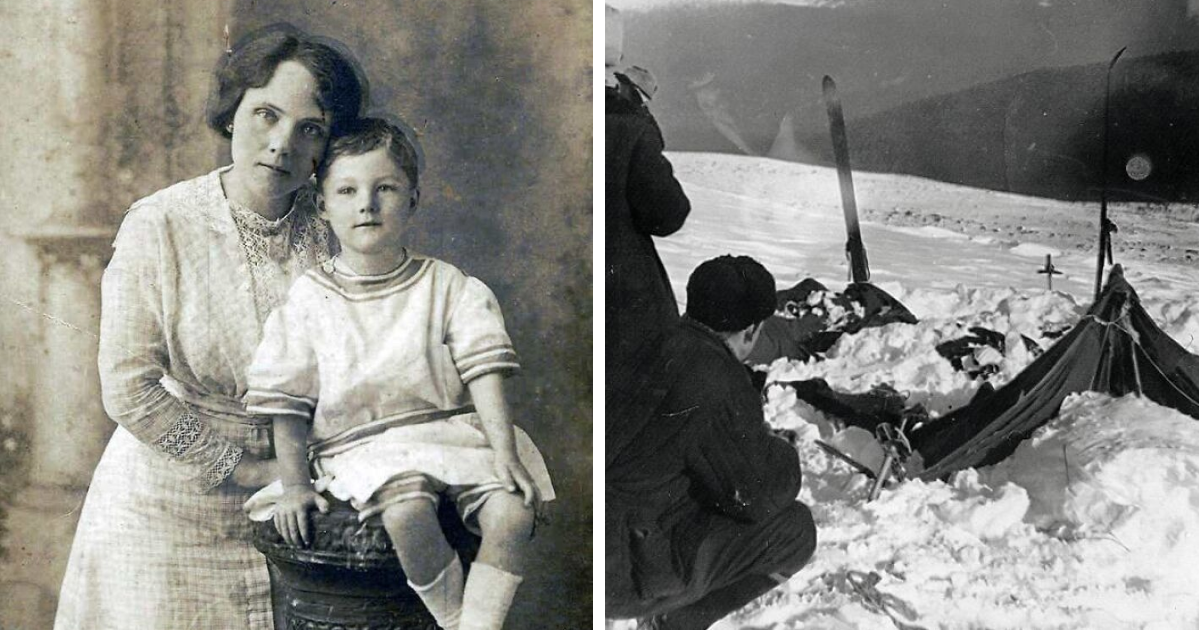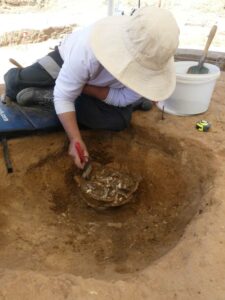ADVERTISEMENT
#6
Six People Have Lost Their Lives Trying To Find The ‘Money Pit’ Of Oak Island
For more than two centuries, a section of Nova Scotia’s Oak Island has been the site of a relentless and deadly treasure hunt. The focus is a deep, man-made shaft known as the “Money Pit,” first discovered in 1795 and allegedly protected by a series of sophisticated booby traps, most notably engineered flood tunnels that fill the pit with seawater as excavators approach its presumed bottom. Despite numerous costly and technologically advanced expeditions that have reported discovering artifacts like non-native coconut fiber and a stone tablet with cryptic symbols, no verifiable treasure has ever been unearthed. The origin and purpose of the elaborate structure remain completely unknown, and the obsessive quest to solve its puzzle has resulted in the deaths of six people.
ADVERTISEMENT
#7
Polynesians Suddenly Stopped Voyaging For 2,000 Years In An Event Known As ‘The Long Pause’
After an astonishingly rapid maritime expansion that saw expert Polynesian seafarers colonize the remote islands of West Polynesia, their eastward exploration came to an inexplicable halt around 900 BCE. For nearly two thousand years, a period now known as “The Long Pause,” these master navigators made no new long-distance voyages into the unpopulated regions of the central and eastern Pacific. Then, as suddenly as it began, the moratorium on exploration ended around 1000 CE with a new burst of activity that led to the settlement of Hawaii, Rapa Nui, and New Zealand. What prompted history’s greatest mariners to cease their defining cultural practice for so long is still not known today.
#8
The Ongoing Hunt For The ‘Black Dahlia’ Killer
The gruesome discovery of Elizabeth Short’s body in a Los Angeles vacant lot in 1947 presented police with a uniquely horrific crime. The 22-year-old, posthumously dubbed the “Black Dahlia,” had her corpse surgically severed at the torso, completely drained of blood, and her mouth carved into a grotesque smile. Adding to the sensational nature of the case, an individual claiming to be the killer mailed a package to a newspaper containing some of Short’s personal identification. Even with one of the most extensive investigations in the city’s history that involved hundreds of officers and produced dozens of confessions, the identity of the person responsible for the brutal murder has never been established.
ADVERTISEMENT
#9
The Unknown Culprit Behind The Hinterkaifeck Slayings
On a remote German farmstead in 1922, an unknown assailant used a mattock to systematically murder all six residents of the Hinterkaifeck homestead, luring most of them into a barn one by one. The crime was preceded by bizarre events, including the discovery of footprints in the snow that led to the property but not away, and unexplained noises coming from the attic. Chillingly, evidence suggests the killer remained on the farm for several days after the slayings, feeding the cattle and eating food from the kitchen before vanishing. Despite an extensive investigation that ruled out robbery as a motive, the perpetrator of this meticulously executed massacre was never identified.
ADVERTISEMENT
#10
Who Put Bella In The Wych Elm?
In 1943, the discovery of a woman’s skeleton inside the hollow trunk of a wych elm in England’s Hagley Wood began a case shrouded in strange circumstances. Forensic analysis concluded the victim had been suffocated and placed in the tree at least 18 months prior to being found by four local boys. The investigation was stymied by a complete lack of identification for the deceased. A particularly unsettling element emerged when graffiti started appearing in the region, posing the question that would name the case: “Who put Bella in the wych elm?” Despite decades of inquiry, the true identity of the woman and the person who wrote the taunting messages both remain unsolved.
ADVERTISEMENT
#11
Dyatlov Pass Incident
In February 1959, nine experienced Soviet hikers perished in the northern Ural Mountains under bizarre circumstances. Investigators discovered their tent had been deliberately sliced open from the inside, with the bodies located scattered up to a kilometer away, many of them barefoot or wearing only socks despite the freezing temperatures. While some of the group succumbed to hypothermia, others sustained fatal internal trauma, including crushed ribs and fractured skulls, without any corresponding external injuries. Further compounding the strangeness, one victim was found missing her tongue and eyes, and traces of radioactivity were detected on some of the clothing. Soviet authorities closed the case by attributing the deaths to a “compelling natural force,” a vague conclusion that has only deepened the enigma surrounding their final moments. $176.09 (as of November 3, 2025 18:42 GMT +00:00 - More infoProduct prices and availability are accurate as of the date/time indicated and are subject to change. Any price and availability information displayed on [relevant Amazon Site(s), as applicable] at the time of purchase will apply to the purchase of this product.) (as of November 3, 2025 18:42 GMT +00:00 - More infoProduct prices and availability are accurate as of the date/time indicated and are subject to change. Any price and availability information displayed on [relevant Amazon Site(s), as applicable] at the time of purchase will apply to the purchase of this product.) $10.00 (as of November 3, 2025 18:42 GMT +00:00 - More infoProduct prices and availability are accurate as of the date/time indicated and are subject to change. Any price and availability information displayed on [relevant Amazon Site(s), as applicable] at the time of purchase will apply to the purchase of this product.) (as of November 3, 2025 18:42 GMT +00:00 - More infoProduct prices and availability are accurate as of the date/time indicated and are subject to change. Any price and availability information displayed on [relevant Amazon Site(s), as applicable] at the time of purchase will apply to the purchase of this product.) $188.99 (as of November 3, 2025 18:42 GMT +00:00 - More infoProduct prices and availability are accurate as of the date/time indicated and are subject to change. Any price and availability information displayed on [relevant Amazon Site(s), as applicable] at the time of purchase will apply to the purchase of this product.)
RIVER OF GOODS Alabaster LED Mesh Caged Ceiling Fan - 52" L X 52" W - White/Oak Wood-Grain Blades
(4254)
RIVER OF GOODS Farmhouse LED Ceiling Fan - 52" L x 52" W - Metal Caged Fixture - Rich Barnwood/Light Driftwood Fan Blades
(5057)
Deck Enhancement #1 - The first expansion of Joking Hazard Comic Building Card - Party Game by Cyanide and Happiness for 3-10 players , Orange, Medium
(4753748)
Promixx FORM Sports Water Bottle - Premium BPA Free Water Bottle for Fitness Sports & Outdoors - Sustainable Drinks Bottle with Measurement Markers and Leakproof Lid - 760ml / 26oz (Midnight Blue)
(4151428)
RIVER OF GOODS LED Boho Ceiling Fan with Hand Woven Brown/Natural Rope - Macrame Knot Work and Hemp Rope Style Eclectic Cottage Decor - 52" L x 52" W - Rich Barnwood/Light Driftwood Fan Blades
(43515)
























